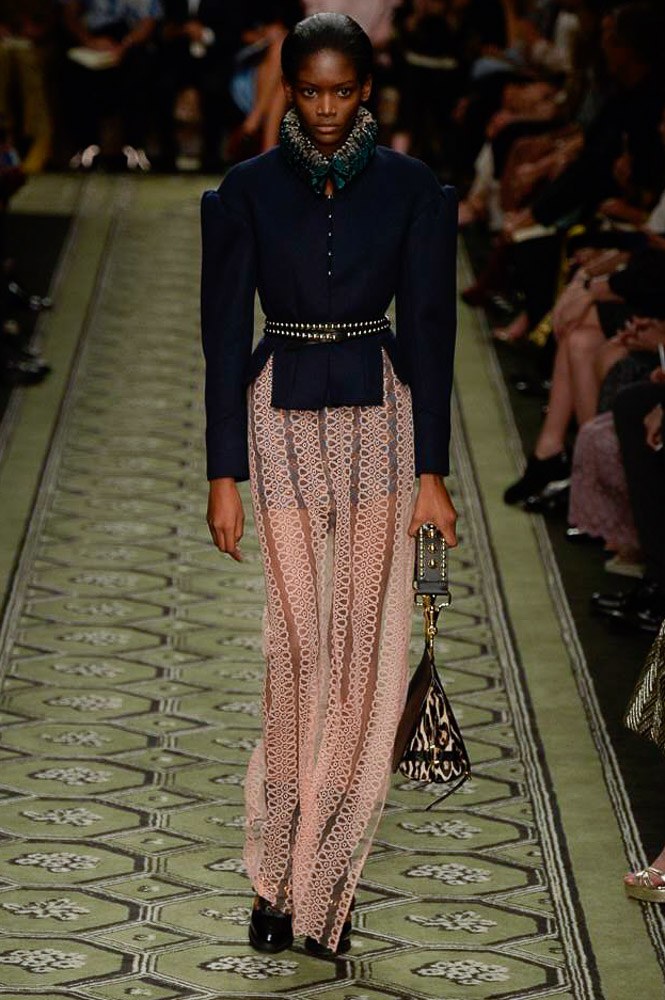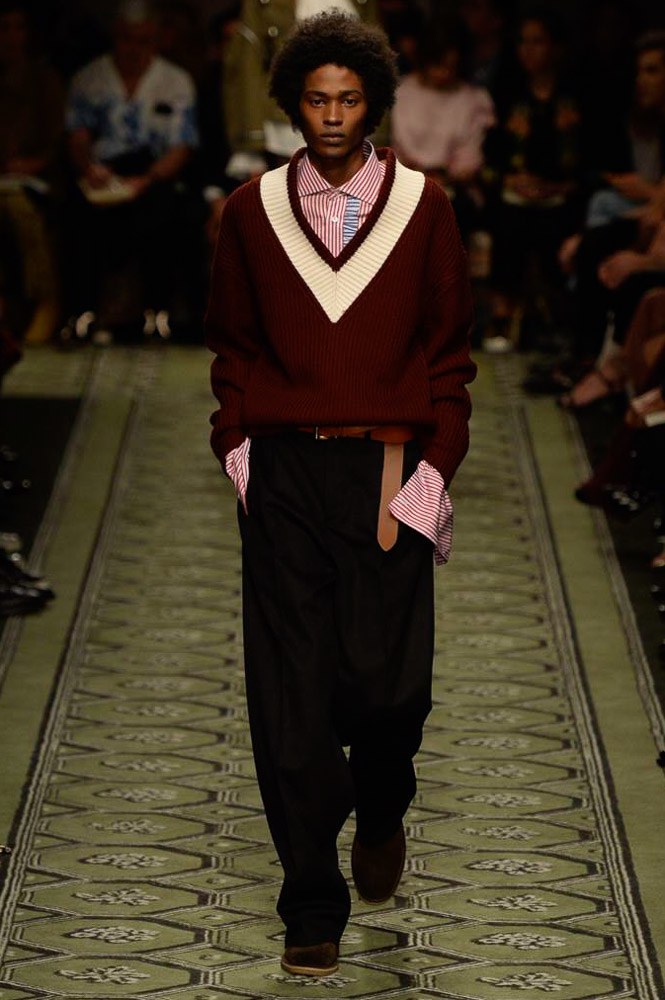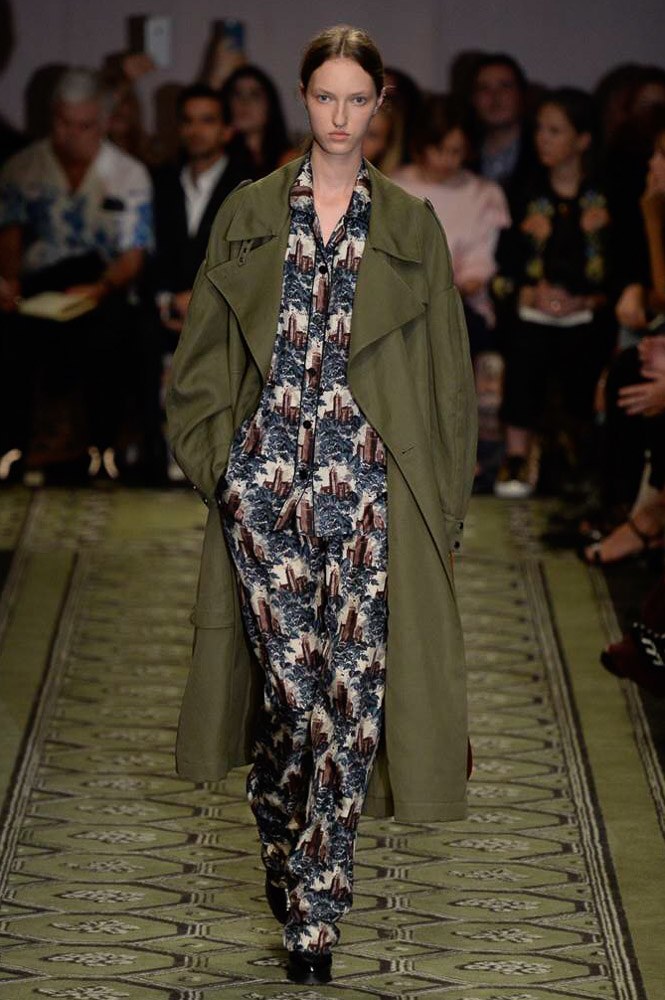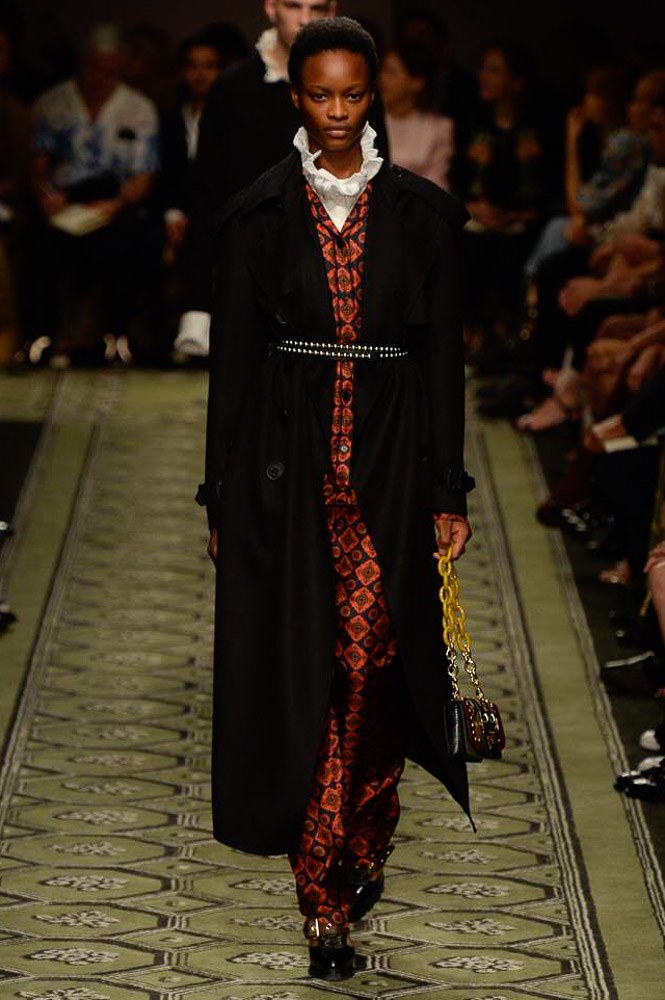By J. Omi Chowdhury
Burberry is quintessentially british. Everything about the brand exudes a sort of refined british-ness in a world of brexit induced racism and soccer hooligans that seem to overshadow a lot of unique british attributes. Burberry came out with it's strongest, loudest collection in recent memory to counter that dizzying low british economy is suffering and social disintegration that is plaguing the fine city of London. With booming Opera sound complemented by classic sculptures, Burberry came out with all guns blazing. Nothing meek, nothing minimalist about this show. As if the atmosphere wasn't imposing enough, the clothes on show were full of decadence and opulence. Christopher Bailey went beyond the usual traditionalist notion of dividing menswear and womenswear and incorporated a narrative that is not only unified but also post gender. Gender fluidity was the inspiration. And the clothes showed that level of movement to provide a strong foundation to further substantiate that London is still a hub of creativity even if certain parts of the Great Britain is neither great nor britain.
From ruffled collars to python bags the collection had everything to suggest Burberry's intention to remain a global luxury brand. Their new business model of "see now-buy now" is worth a closer look as large fashion houses like Tom Ford and Ralph Lauren has already adopted that approach. Whether or not that instagram-style consumerism will permeate high fashion is still up for debate and only time will tell if the bottom lines of these fashion houses change because of this model. But business aside, it was still a wonderful show to take in. As london fashion week comes to a close this was probably the most intriguing show on display.










































































